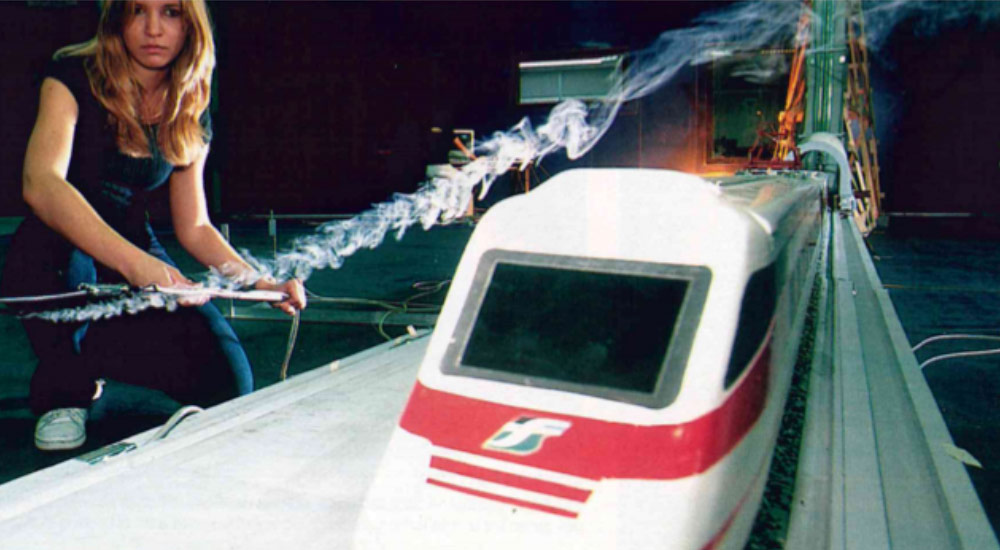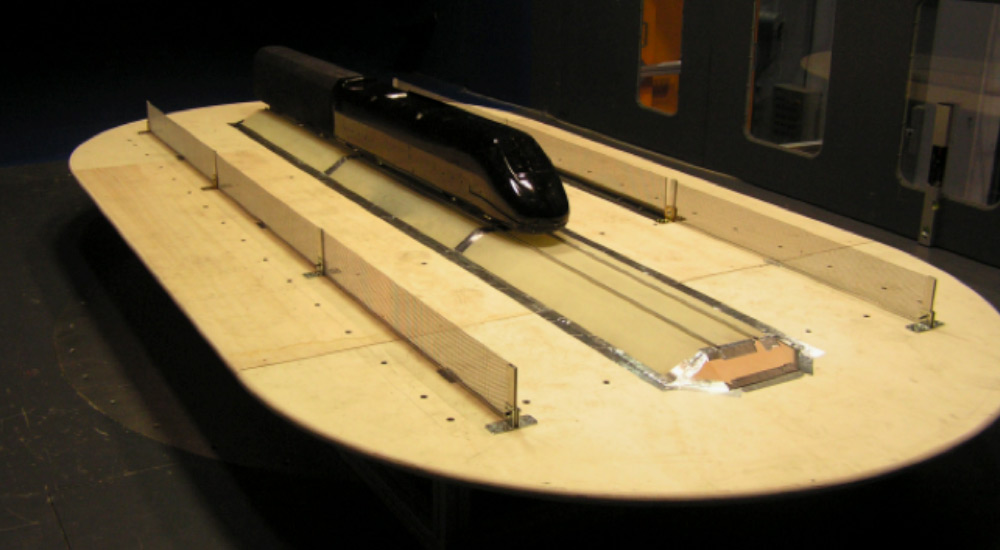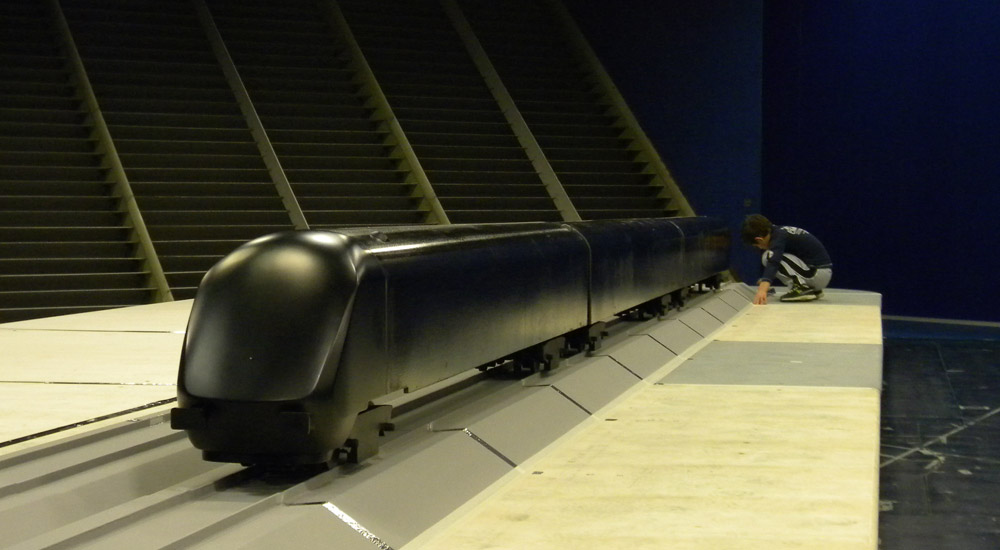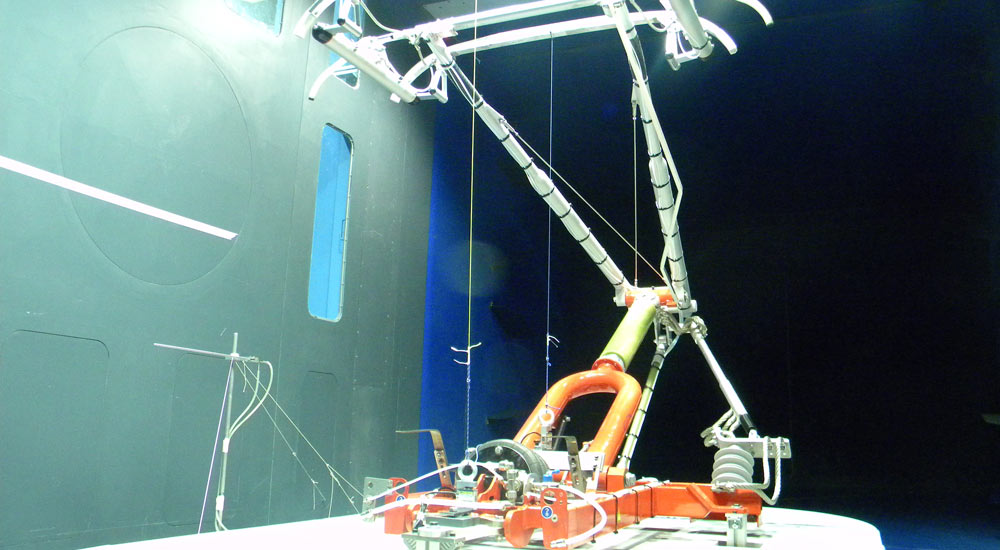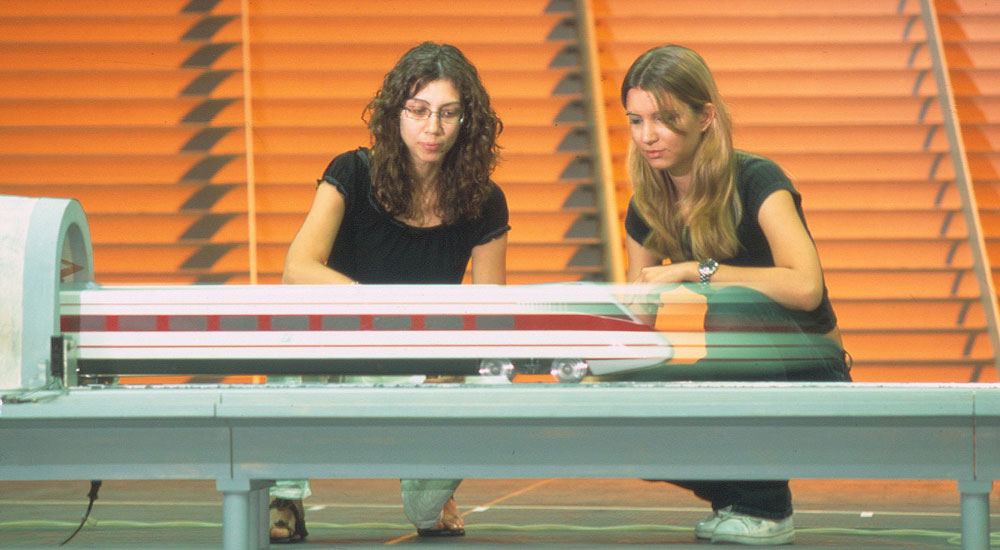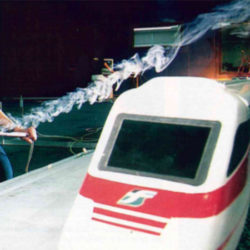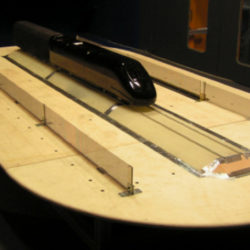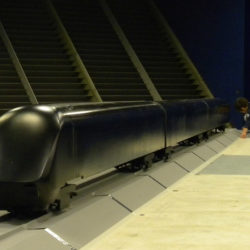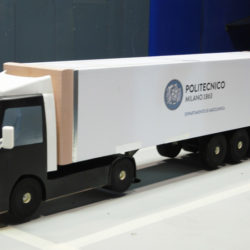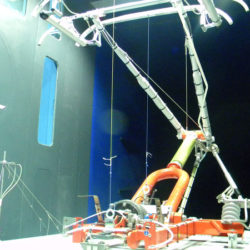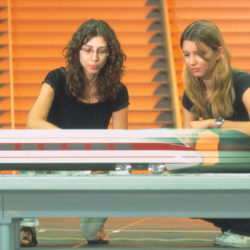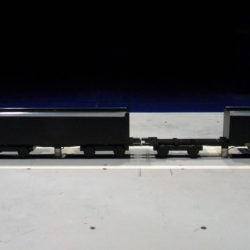Rail & road vehicles
Aerodynamics has an increasing importance in rail and road vehicle design. The interest is mainly focused on vehicle overturning risk to increase the safety and on the drag reduction to reduce energy consumption and pollutant emission. Wind tunnel tests are essential to evaluate the aerodynamic actions on the vehicles, since it is possible to measure the vehicle-flow interaction with well-established conditions in terms of air speed and incidence angle.
The large test sections of GVPM allow to test large scaled models, but also full scale objects, allowing to reproduce not only the most relevant geometrical features of the vehicle, but also to investigate the effect of smaller scale details. The large model dimension, coupled with the air speed up to 55m/s allows to achieve relatively high Reynolds numbers.
Several different testing conditions are possible, starting from aerodynamic forces definition as a function of the vehicle yaw angle, to the definition of the interference between two vehicles or between the vehicle and the infrastructure.
It is possible also to test single vehicle components, such as rear-view mirrors, rear wings, train pantographs, etc…
The force measurement is performed using high precision six-component force balances that may be installed inside or outside the vehicle. The state-of-the-art pressure measurement system allows to simultaneously measure at high sample-rate the surface pressure on more than 500 measurement points placed on the vehicle surface. Flow visualization can be obtained using smoke or with helium bubbles.
Full scale measurement has been conducted for several vehicles, including heavy good trucks and high speed trains. Wind tunnel tests and full scale measurements have been used to validate Computational Fluid Dynamics models in order to have a mode deep insight on the flow characteristics.
Possible testing capabilities:
- Wind tunnel testing of trains compliant with TSI and CEN standards
- Train – tunnel aerodynamic interaction
- Train – ballast aerodynamic interaction
- Train – barrier aerodynamic interaction
- Characteristic wind curves (CWC) computation
- Vehicle / infrastructure dynamic interaction
- Wind on windbreak fences: force on barriers and wind profiles on lanes
- CFD simulations compliant with CEN standards
- Freight trains, light rail, tram aerodynamics
- Heavy goods trucks aerodynamics
- Racing cars and motorcycles aerodynamics.

